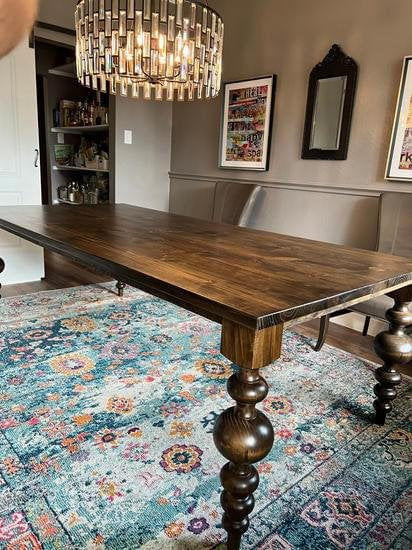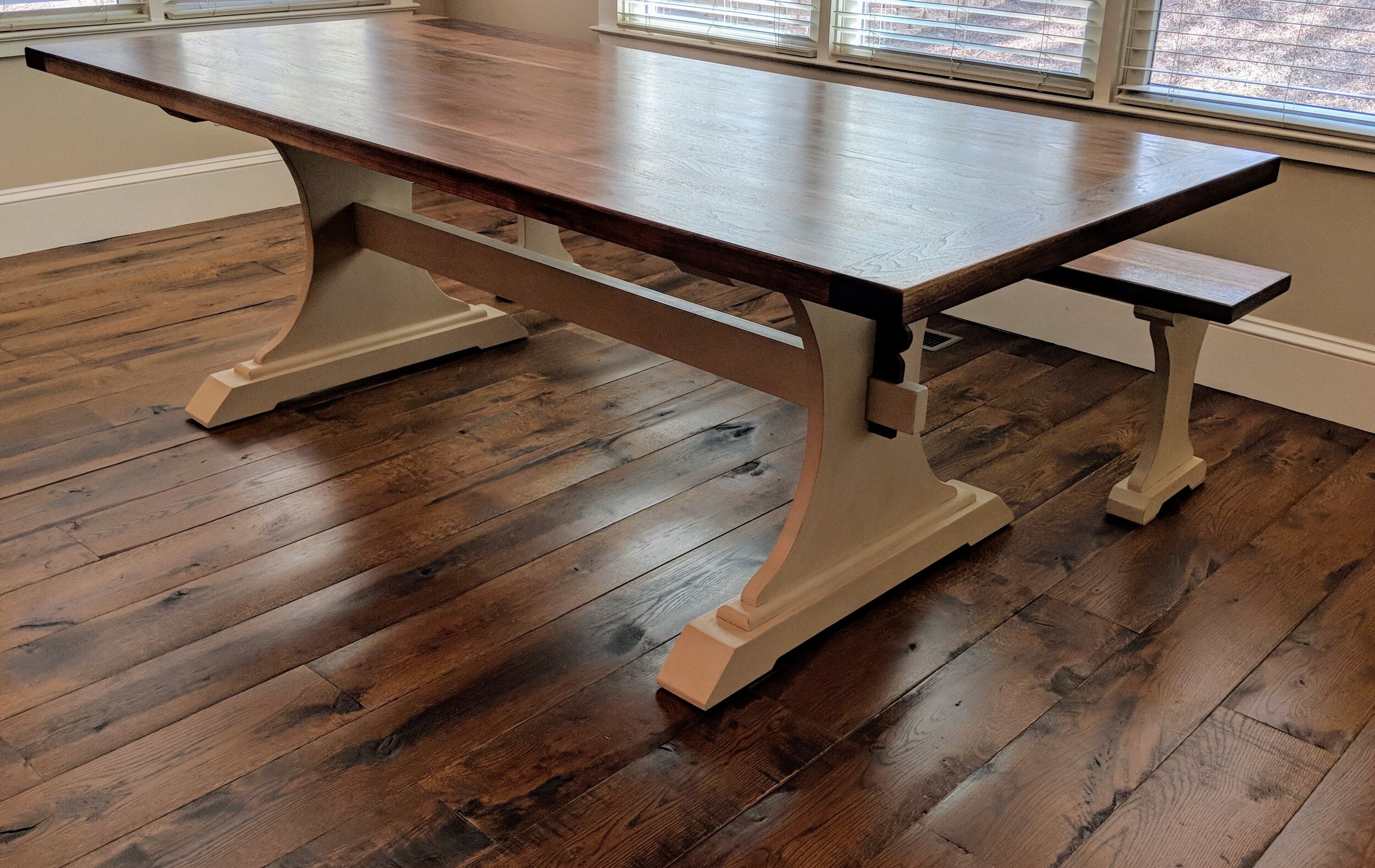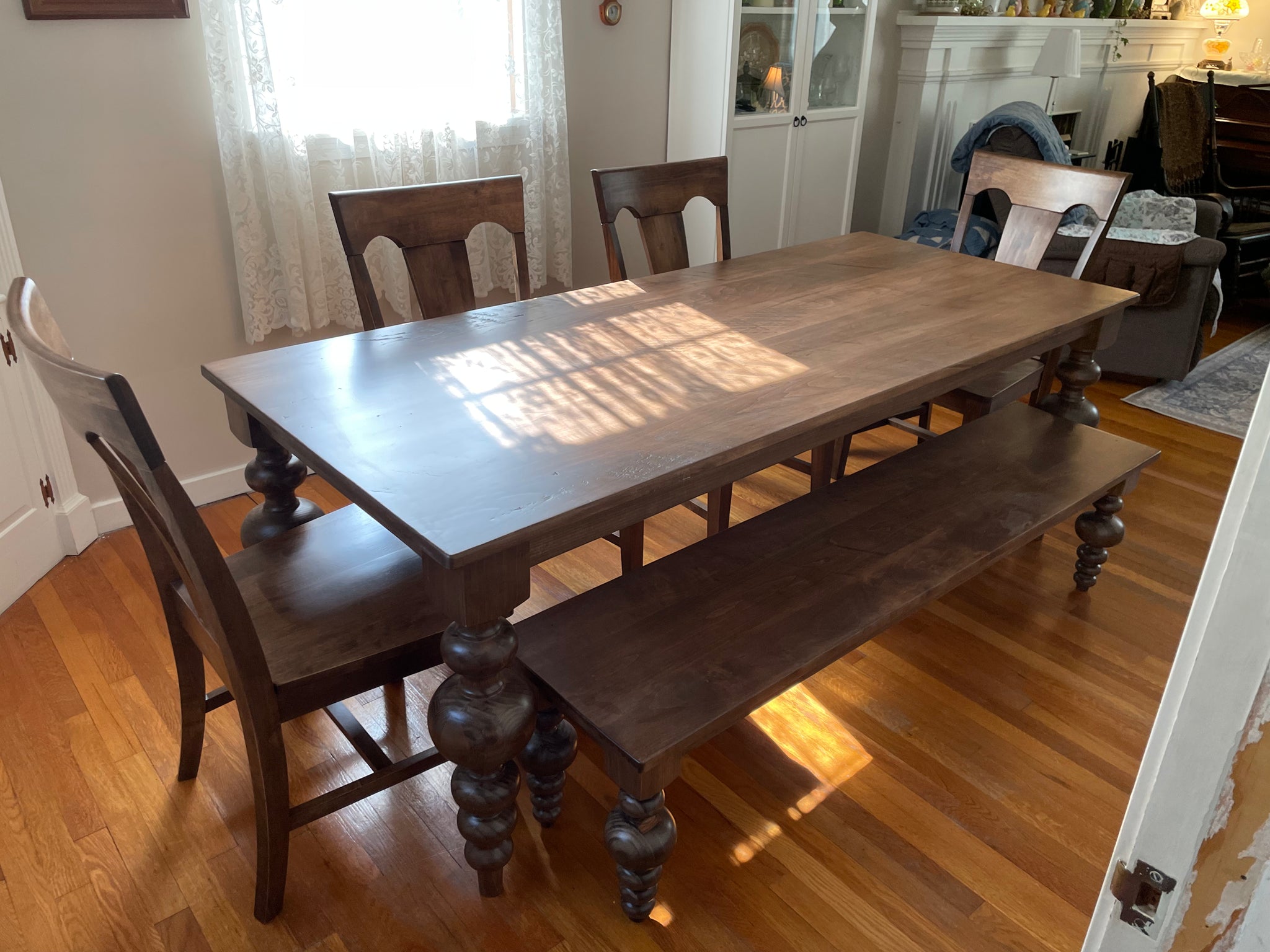Creative Ideas for Replacing or Refurbishing Your Dining Room Table Legs
Creative Ideas for Replacing or Refurbishing Your Dining Room Table Legs
Blog Article
Just How to Choose the Perfect Dining-room Table Legs for Your Home Decor
Choosing the perfect dining space table legs is a nuanced process that needs careful factor to consider of numerous elements, including your room restrictions, visual choices, and practical requirements. The interaction in between dimensions, designs, and products can dramatically influence the ambiance of your eating location, making it essential to approach this decision methodically.
Assess Your Eating Room
Assessing your dining area is critical for selecting the right table legs that match both appearances and capability. Begin by determining the dimensions of your eating area, including ceiling height, floor space, and distance to various other furnishings. This details will certainly help determine the suitable dimension and height of your table, which directly affects the option of table legs.
Next, consider the design and design of your eating room. For example, an open-concept style might profit from table legs that provide aesthetic lightness, such as slender steel or acrylic alternatives. On the other hand, an extra conventional setting could ask for tough wooden legs that offer a feeling of permanence.
Review the existing color scheme and materials in your dining area. Balancing the table legs with these elements develops a cohesive look that improves the overall design.
Ultimately, an extensive analysis of your dining area will certainly direct you in making a notified choice, making certain that your table legs not just enhance the visual charm yet additionally offer sensible purposes.
Consider Your Style Preferences
When choosing dining-room table legs, it is vital to assess your individual style preferences, as they considerably affect the general visual of your eating space. Your choice of table legs can either complement or contrast with existing décor, making it critical to align them with your favored interior layout theme.
If your home leans in the direction of a contemporary visual, take into consideration smooth steel or minimal wooden legs that offer a tidy, clean look. For a much more traditional technique, luxuriant wooden legs with intricate makings can add a touch of sophistication and class. Industrial styles benefit from durable, basic materials such as recovered wood and steel mixes, showing a rugged appeal.
In addition, farmhouse and rustic designs typically favor tough, chunky legs that evoke a feeling of heat and convenience. Conversely, if your decor is eclectic, you might select unique forms or a mix of materials to produce visual rate of interest.

Evaluate Product Options
The choice of product for eating room table legs plays a pivotal duty in both durability and visual allure. Typical materials consist of wood, steel, and composite options, each offering distinctive characteristics that can affect the overall appearance and long life of your table.
Wood is a classic selection, understood for its warmth and adaptability. Woods like oak and walnut provide extraordinary toughness and can be finished in numerous spots to match any decor. Softwoods like want are more prone to dents and scrapes, making them less optimal for high-traffic locations.
Metal legs, usually crafted from steel or light weight aluminum, exude modernity and commercial beauty. They are very long lasting and resistant to use, making them ideal for households with youngsters or constant gatherings (dining room table legs). Additionally, steel can be finished in various shades, boosting the modification possibilities
Composite products, such as MDF or laminate, deal price and varied styles. While typically less sturdy than solid timber or steel, they can still offer a fashionable appearance and are typically simple to maintain.
Inevitably, the product you navigate to this site select must align with your way of living, aesthetic choices, and the degree of use your table will experience.
Determine Height and Size
Picking the appropriate elevation and size for your dining-room table is vital for both functionality and comfort. The conventional elevation for eating tables typically ranges from 28 to 30 inches, allowing enough legroom for many people when seated. Nonetheless, it is crucial to take into consideration the measurements of your dining index area and the sorts of chairs you prepare to use.

Moreover, consider the percentages of your dining-room. A larger table in a spacious area can develop a grand setting, while a smaller sized table works well in more intimate settings. Inevitably, the right elevation and size will balance with your general decor and enhance the eating experience for you and your guests.
Explore Customization Possibilities

In addition, the design of the legs can be personalized to fit various designs, such as rustic, contemporary, or industrial. Tapered legs can stimulate a mid-century contemporary feel, while chunky, block-style legs might resonate with conventional or farmhouse style.
Homeowners can likewise explore color finishes, from all-natural timber discolorations to repaint, enabling them to match or contrast with the tabletop and surrounding style.
Additionally, leg height can be adapted to suit particular seating setups or personal preferences, improving both convenience and capability.
Lastly, unique decorations, such as makings or decorative braces, can further individualize the table legs, making the dining experience not simply a declaration but a meal piece in the home. By considering these customization choices, home owners can develop a dining-room table that absolutely shows their individuality.
Conclusion
Picking the excellent eating space table legs needs careful factor to consider of numerous aspects, including the measurements of the dining space, design preferences, product durability, and preferred elevation. Personalization alternatives better improve the capability to attain a natural visual that complements the general decoration. By methodically reviewing these elements, house owners can ensure that the selected table legs not only accomplish functional requirements but likewise contribute favorably to the dining experience and setting of the home.
Selecting the optimal eating space table legs is a nuanced procedure that requires mindful consideration of various elements, including your room constraints, visual choices, and practical demands.Evaluating your eating space is crucial for picking the right table legs that enhance both looks and performance.When figuring out dimension, determine read the article the area where the table will be put to guarantee it fits easily, enabling for at the very least 36 inches of clearance around the table for easy movement. A bigger table in a sizable location can create a grand atmosphere, while a smaller sized table functions well in more intimate settings.Selecting the ideal dining room table legs needs cautious consideration of various factors, including the measurements of the dining room, design choices, product longevity, and preferred height.
Report this page